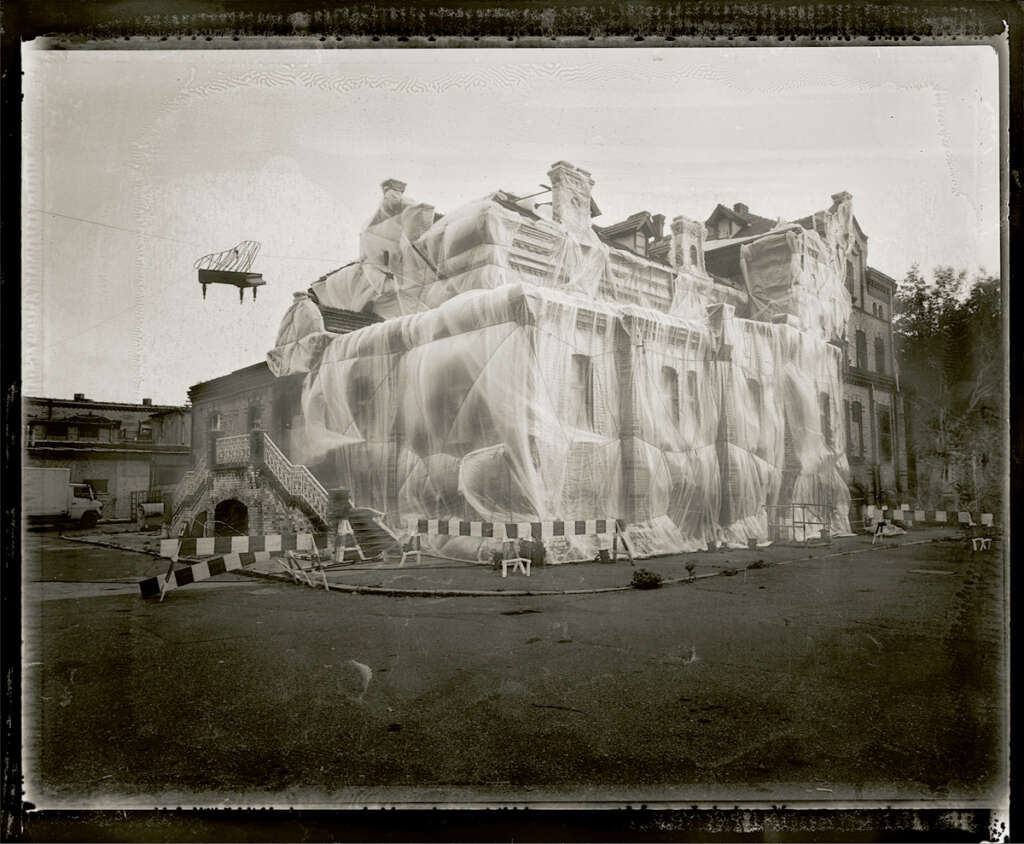Doublespeak on Kusheli

When photographing the places that inspire him, Maciej Kuszela also tries to emphasize the personal nature of this inspiration. Therefore, the final form of these images is usually the result of various additional manipulations, which may be surprising when juxtaposed with the fact that the term "photojournalist" appears so often in the author's biography. However, it is understandable that when a photograph is created out of a purely personal need, it becomes most important to express the relationship between the matter of the outside world and the observer.
In the cycle Cities and gardens The author is apparently attracted to a certain vision of the unity of the creations of civilization and nature, which has manifested itself in the concepts of gardens for centuries. Baroque palace-garden complexes are an impressive example of it. However, Maciej Kuszela does not document such classical achievements of art in his series; we do not always have a garden in our field of vision, and even if we do, these are modest realizations. What matters most in his message is the intention itself, which prompts the author to transform an existing urban structure into a place of focus, harmonizing details or even the fulfillment of a mystery.
Following this path, Maciej Kuszela refers to a long tradition in literature and fine arts in expressing this type of metaphor. And I think that the reporter's sensitivity, which makes him pay attention to found situations and specific details, provides his works with a contemporary character. Hence, despite the similarity in the aforementioned intentions with the works of, for example, such classics of Polish photography as Tadeusz Wanski and Jan Bulhak, these are different images and set in the climate of our time.
Adam Sobota
Cities and gardens
Maciej Kuszela's photography has many facets: portraits, landscapes, architecture, interiors, gardens. This thematic multiplicity is compounded by a variety of techniques in taking and processing photographs. Often, as in the case of the photographs presented here, he uses enlargements of extraordinary quality, made from a minimum 8×10 cm negative and using Polaroid technology. Add to this a very conscious use of wide-angle lenses and large-format camera functions, and the result is very spatially sublime images. He himself says that he basically photographs banal views. Later, it very often turns out that enclosing them in a frame gives rise to unusual encounters. At least for him, Well, maybe for a few more people as well. For uncommon is the transformation taking place through the medium of photography, when the real in the photo becomes unreal. How does this happen? When processing the negatives, the author uses purely formal photographic procedures. In general, these are conscious actions, but there are also times when they are completely accidental (abrasions or accidental scratches). Each time they produce unpredictable results. He himself is always curious to see what comes out of it: when he intentionally leaves a developer substance, on the film, that "eats" the image, when he stores the negatives incorrectly and fungi breeds on them, when he makes prints that begin to "work" among the elements of the image.
It should be added that all these intrusions are mitigated - suppressing details - by the coarse-grained paper he uses. Captured in uneven frames, the view receives additional space, so to speak, thanks to these treatments. Sometimes several. This affects its drama. And the atmosphere. As a result, for some, these photos are a story about transience, the insignificance of being, death even, which would correspond to the fact that these images - due to the omission of proper processing - will one day simply fade away. For others, it's a story about the mystery of being. For others - an aesthetically pleasing play of shapes. Monika Piotrowska, in the introduction to the catalog of the exhibition of Poznan photographers in Hannover (2005), wrote:
"He hides everything behind a veil, a clear image behind a curious gelatin, a motif under a motif, a frame under a frame. He plays with a mystery that is probably not there at all. Rather, he entertains himself with preparation
mysteries. Images overlap: is it a canvas from a church altar or a city view? [...] This is how you can see
Everything and maybe sometimes you have to. You gain distance."
Bozena Anna Kuszela

The article appeared in issue 34 of "Fotografia Quarterly" in 2010






1 Komentarz
Waldemar Sliwczynski
Maciej has the rare gift of seeing the extraordinary in the ordinary and turning it into an extraordinary, unreal image that is hard to take your eyes off of....